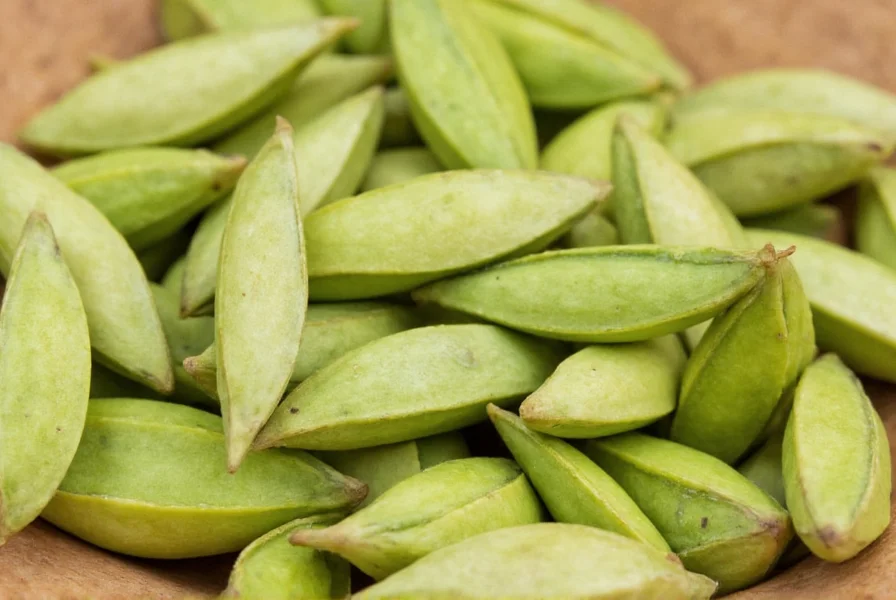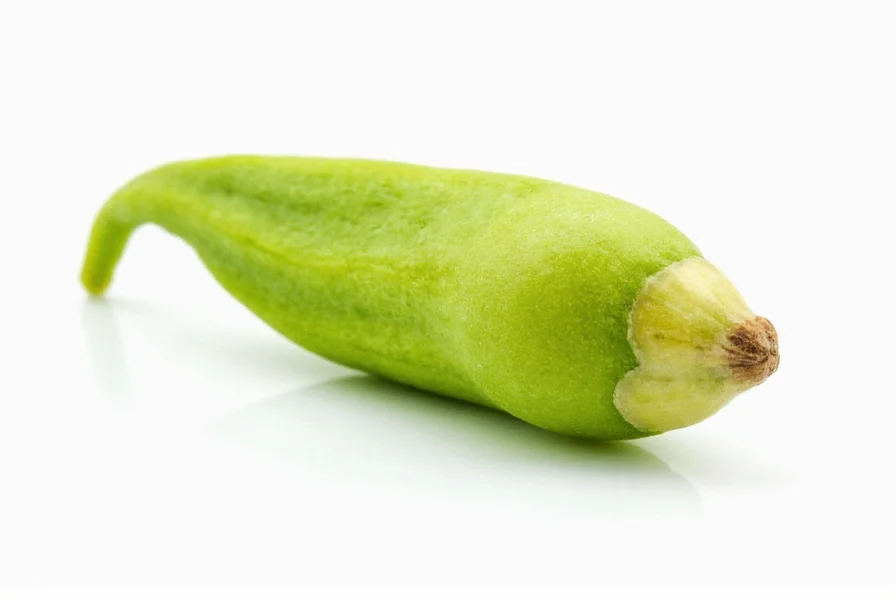Green cardamom pods represent one of the world's most ancient and versatile spices, cherished for millennia across diverse culinary traditions. Understanding their unique properties helps home cooks and professional chefs alike elevate their dishes with authentic flavor.
Understanding Green Cardamom Varieties
While green cardamom pod typically refers to Elettaria cardamomum, it's essential to distinguish between the two primary cardamom varieties:
| Characteristic | Green Cardamom (Elettaria) | Black Cardamom (Amomum) |
|---|---|---|
| Origin | India's Western Ghats | Himalayan regions |
| Flavor Profile | Citrusy, floral, herbal with eucalyptus notes | Smoky, camphorous, earthy |
| Primary Use | Sweet dishes, rice, beverages | Robust savory dishes, stews |
| Processing | Air-dried without heat | Smoke-dried over open flames |
Flavor Chemistry and Culinary Impact
The distinctive flavor of fresh green cardamom pod comes primarily from cineole, limonene, and linalool compounds. When heated, these compounds transform, creating more complex aromatic notes. Professional chefs understand that how to use green cardamom pods in baking differs from savory applications—whole pods work best in slow-cooked dishes, while freshly ground seeds provide immediate flavor impact in baked goods.
Unlike pre-ground alternatives, whole pods preserve volatile oils that degrade quickly once exposed to air. This explains why fresh green cardamom pod vs ground cardamom makes such a dramatic difference in final dish quality. The seeds inside contain the highest concentration of flavor compounds, while the pod itself contributes subtle background notes.
Practical Usage Techniques
Mastering how to grind green cardamom pods at home ensures maximum flavor retention. Chefs recommend:
- Gently crushing pods with a mortar and pestle before removing seeds
- Using a dedicated spice grinder for optimal freshness
- Adding ground cardamom late in cooking to preserve volatile aromatics
- Infusing whole pods in liquids like milk or syrup for even distribution
For traditional uses of green cardamom in Indian cuisine, the spice appears in everything from biryanis to chai to sweets like kulfi. Scandinavian baking traditions feature it prominently in breads like Finnish pulla and Norwegian julekake. Understanding these cultural applications helps determine appropriate usage levels—typically 3-5 pods per serving for most dishes.

Selection and Quality Assessment
Authentic green cardamom pod identification requires attention to several key factors:
- Color: Vibrant pale green (avoid yellowed or brown pods)
- Texture: Firm, slightly springy pods that don't crush easily
- Aroma: Strong, complex fragrance when lightly crushed
- Seeds: Dark black seeds visible through thin pod walls
- Weight: Heavier pods indicate better seed development
Lower quality products often show signs of improper drying or extended storage. When evaluating best way to store green cardamom pods, remember that whole pods maintain freshness significantly longer than pre-ground versions. The ideal storage method involves airtight containers away from light and heat.
Storage Guidelines for Maximum Freshness
Proper storage dramatically extends the shelf life of your green cardamom pod investment:
- Keep whole pods in airtight glass containers
- Store in a cool, dark cupboard (not near the stove)
- Consider freezing for long-term storage (up to 2 years)
- Never store near strong-smelling spices that could affect flavor
Ground cardamom loses potency within 3-6 months, while properly stored whole pods maintain quality for 1-2 years. The difference between green and black cardamom pods extends to storage requirements too—green cardamom's more delicate flavor compounds require more careful handling.

Substitution Strategies
When facing the challenge of green cardamom pod substitutes, consider these options:
- Ground cardamom: Use 1/4 teaspoon per pod (less flavorful)
- Cardamom seeds only: Slightly more intense than whole pods
- Combination approach: Equal parts cinnamon, coriander, and ginger for approximation
- Black cardamom: Only in savory dishes (use half amount due to stronger flavor)
Professional chefs note that substitutions never fully replicate authentic green cardamom flavor. For Scandinavian baking or Indian desserts, finding genuine pods makes a significant difference in final product authenticity.
Common Questions About Green Cardamom Pods
Frequently Asked Questions
How many seeds are typically in one green cardamom pod?
A single green cardamom pod usually contains 8-12 small black seeds. The exact number varies based on pod size and maturity, with larger pods from premium harvests containing more seeds. These seeds hold the most concentrated flavor, which is why many recipes specify using just the seeds rather than the entire pod.
Can I use green cardamom pods in coffee or tea?
Yes, green cardamom pods work beautifully in both coffee and tea. For coffee, add one crushed pod per 4-ounce serving during brewing. In tea, steep one whole pod per cup for 3-5 minutes. The spice complements black teas particularly well and creates the traditional Middle Eastern qahwa preparation. Remove pods before serving to prevent overpowering the beverage.
What's the difference between Mysore and Malabar cardamom?
Mysore and Malabar refer to two primary Indian growing regions for green cardamom. Mysore cardamom typically has a stronger eucalyptus note and darker green color, while Malabar varieties feature more citrus notes with lighter green pods. Both are Elettaria cardamomum but develop distinct flavor profiles based on terroir. Mysore is often considered premium, but personal preference determines which works better for specific recipes.
How do I know if my green cardamom pods have gone bad?
Expired green cardamom pods lose their vibrant green color, becoming yellow or brown. They'll feel brittle rather than slightly springy when squeezed, and most importantly, will have little to no aroma when crushed. Properly stored pods maintain potency for 1-2 years, but exposure to light, heat, or humidity accelerates degradation. Always check aroma before using in important recipes.
Should I remove cardamom pods after cooking?
Yes, you should remove whole cardamom pods before serving most dishes. While the pods infuse flavor during cooking, they remain tough and inedible. In rice dishes and stews, leave pods in during simmering but remove them before serving. For beverages like chai, remove pods after steeping. Some traditional preparations like Indian biryani may include a few decorative pods for presentation, but these are not meant to be eaten.











 浙公网安备
33010002000092号
浙公网安备
33010002000092号 浙B2-20120091-4
浙B2-20120091-4